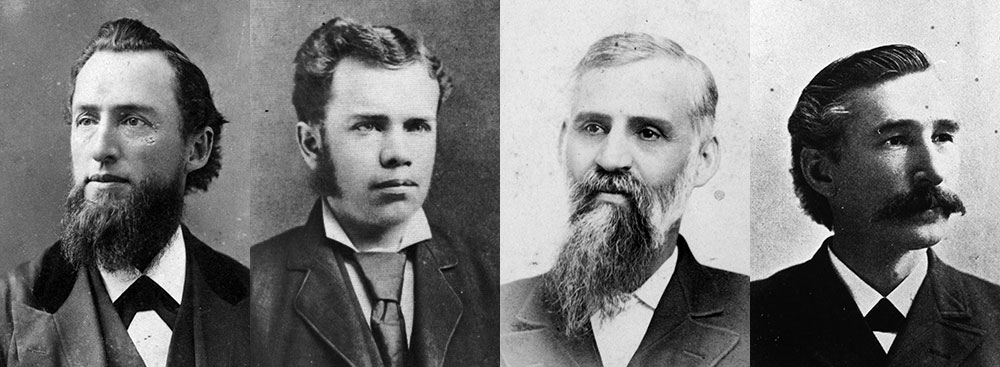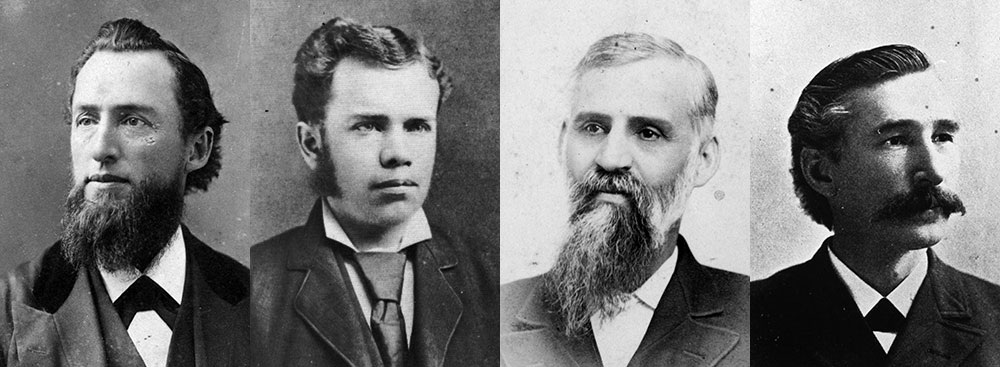
Trying to condense the story of the 1888 General Conference session is not an easy task. But this is our attempt to “simplify” it into an easy-to-read informational map. It is not meant to give the full story. We encourage you to learn more about this watershed event in Adventist history by checking out the resources in the list we’ve provided.
MERLE POIRIER
Simply put, it was about how to interpret certain passages in the book of Galatians. One view stressed Paul’s support for the law, while the other emphasized the gospel. There also was tension between those who perceived “new” theology versus traditional theology preached by Adventists for the previous 30 years. Mix in further disputes over the identification of the 10 horns in Daniel 7 and personalities who revealed a less-than-Christlike spirit, and you had a recipe for controversy and misunderstanding.
The main antagonists were George I. Butler, General Conference president; and Uriah Smith, Review and Herald editor; versus Alonzo T. Jones and Ellet J. Waggoner, coeditors of Signs of the Times. Butler and Smith represented the traditionalists and were part of the church leadership in Battle Creek, Michigan. Jones and Waggoner were talented younger preachers who lived in California. All four were known for setting themselves on certain principles and refusing to move. Sharp words were sent back and forth, both verbally and in print, as they argued their positions.
Ellen White, recognized by the church as God’s messenger, was also involved. Prior to the session she attempted to stay neutral regarding the debate between the two sides. As discussions became more heated, she ventured in to help keep a civil tone between the men. Ellen White eventually became a strong advocate for the message of Jones and Waggoner.

Yes. It had deeper roots. Because of its distinctive doctrinal teachings, debates were common between Adventist preachers and those of other faiths; so much so that Adventists became known as being all about the law and not about the gospel.
During the 1880s there emerged growing support for Sunday legislation in certain states. By May 1888, a Sunday law bill, introduced into the U. S. Congress, led Adventists to believe end-time prophecy was being fulfilled. Butler and Smith’s reaction was influenced by believing the church was being attacked from the outside as well as from within. To interpret the law in Galatians 3 as anything other than the ceremonial law was to abandon the distinct beliefs of Adventism itself.
Ellen White wrote a testimony on the issue in the 1850s that could not be found, but which Butler and Smith believed supported their view. They felt that accepting the new interpretation meant abandoning traditional Adventism, as well as the prophetic gift.
The easiest question to answer. Things finally came to a head in the newly constructed Adventist church in Minneapolis, Minnesota, from October 17 through November 4, 1888.
What was the outcome?
Ellen White was unhappy with Butler and Smith because of their sharp attacks against Jones and Waggoner. When Smith retaliated in the Review, White advised that Waggoner should have his time as well. Thus Butler reluctantly included him on the session agenda.
Interestingly, at the session Waggoner abandoned his earlier tactics and preached about righteousness by faith. More than half of his sermons were on this topic. Only then did he deal with Galatians. This caused the entire debate to turn.
Butler resigned at the 1888 session. Smith also gave up his position. Ellen White left discouraged, but did not give up hope. She joined her voice with Jones and Waggoner’s, proclaiming a renewed focus on Christ. They preached across the nation to leaders and members. By 1896 Ellen White felt that the church had mostly accepted the 1888 message.
Why should we care about the 1888 crisis within the church? There are four important reasons: